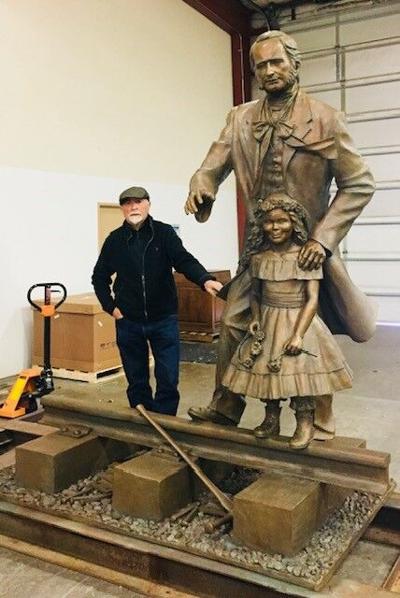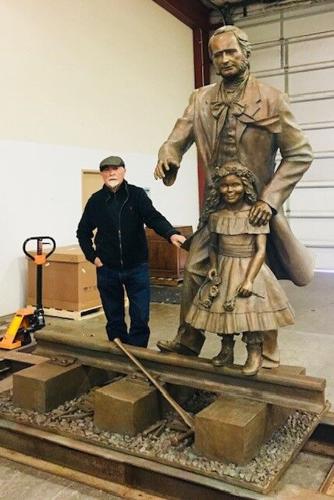FLORENCE — Amid a nationwide trend of removing monuments honoring people with ties to the Confederacy, a South Carolina county council wants to put one on display.
Florence County leaders voted 5-4 along mostly partisan lines on July 21 to display a statue of William W. Harllee, the lieutenant governor when South Carolina seceded ahead of the Civil War, on grounds of the county museum.
The decision came four years after the museum board rejected displaying the bronze statue and the city of Florence backed out of the project.
"It's a poke in the eye of the community," said state Rep. Terry Alexander, D-Florence, who called it "a bad move" and "an insult."
Statue supporters said they want to honor Harllee, who founded the county named after his daughter that is 80 miles east of Columbia.
"This guy (Harllee) formed the reason the town is here," Council member Kent Caudle, a Republican, said. "I don't think that has anything to do with racism."
The statue stirred debate over what historical monuments are appropriate at a time when racial social justice has become a hot-button issue. Communities across the country have removed monuments tied to historical figures with racially questionable pasts.
They have not left South Carolina because of a law called the Heritage Act, which requires legislative approval to remove historical monuments and names. The act is rarely used, with the last vote coming in 2015 to remove the Confederate flag from the S.C. Statehouse grounds after the Charleston church mass shooting.
The disagreements over Harllee center around interpreting his life's work.
Some see him as Florence's founder, a railroad president, a state legislator and a lieutenant governor. Others see how he participated in the state secession convention, raised the Pee Dee Legion as a brigade for Confederate service during the Civil War and served as state finance director during the war.
Historian Will Bolt at Francis Marion University in Florence called the decision to honor Harllee "surprising" and a move that goes against the current trend to remove Confederate monuments and ignore figures with Confederate ties. He called Harllee's legacy a "mixed-bag."
About five years ago, family members and others supporting Harllee asked Israeli sculptor Alexander Palkovich, who then operated a studio in Florence, to create the piece. Palkovich said the scene depicts Harllee standing with his daughter on a train track and Harllee saying, "This place shall be called Florence."
But when the statue was finished in 2018, the museum board rejected it after Harllee's past became a matter of debate. The monument has remained out of sight with supporters unable to find anyone to give them a piece of private land to display the statue.
"I thought it was dead," County Council member Jason Springs said.
Then the statue appeared on the council agenda this week. Springs said he didn't understand the timing.
The council adopted a resolution on July 21 that the sculpture "shall be exhibited in an appropriate location" on museum grounds, saying it "needs a place of exhibition."
Caudle, a Republican, said the timing makes sense because "it's been far too long."
The action seemed to take museum staff by surprise. Spokesman Tim Busher said he was "unaware" a couple of hours after the vote. No date was announced for putting the statue on museum grounds.
Palkovich, who has created many other Florence-area works, said he was "proud and honored" by the decision, which "will make Florence a better place."
County Council member Al Bradley said he initially backed creating the sculpture and supported funding it and other works by Palkovich. When Bradley became more aware of Harllee's history, that position changed.
Bradley, a Democrat and one of just two Black council members, voted against exhibiting the sculpture, also casting a proxy vote for Waymon Mumford, a fellow Democrat and the council's only other Black member.
"Right now, with what's going on in the country, putting it up on government property is not a good move," Bradley said.
Two White council members, Springs, a Democrat, and Roger Poston, a Republican, also voted against displaying the statue. All five votes to display the statue came from White Republicans.
Springs said he doesn't think the sculpture belongs on public grounds.
Bradley said his objections were tied to Harllee's legacy.
"I'm not sure what the (community) reaction is going to be," he said. "A lot of people don't know about the slavery part. When that comes out, there could be a backlash."











